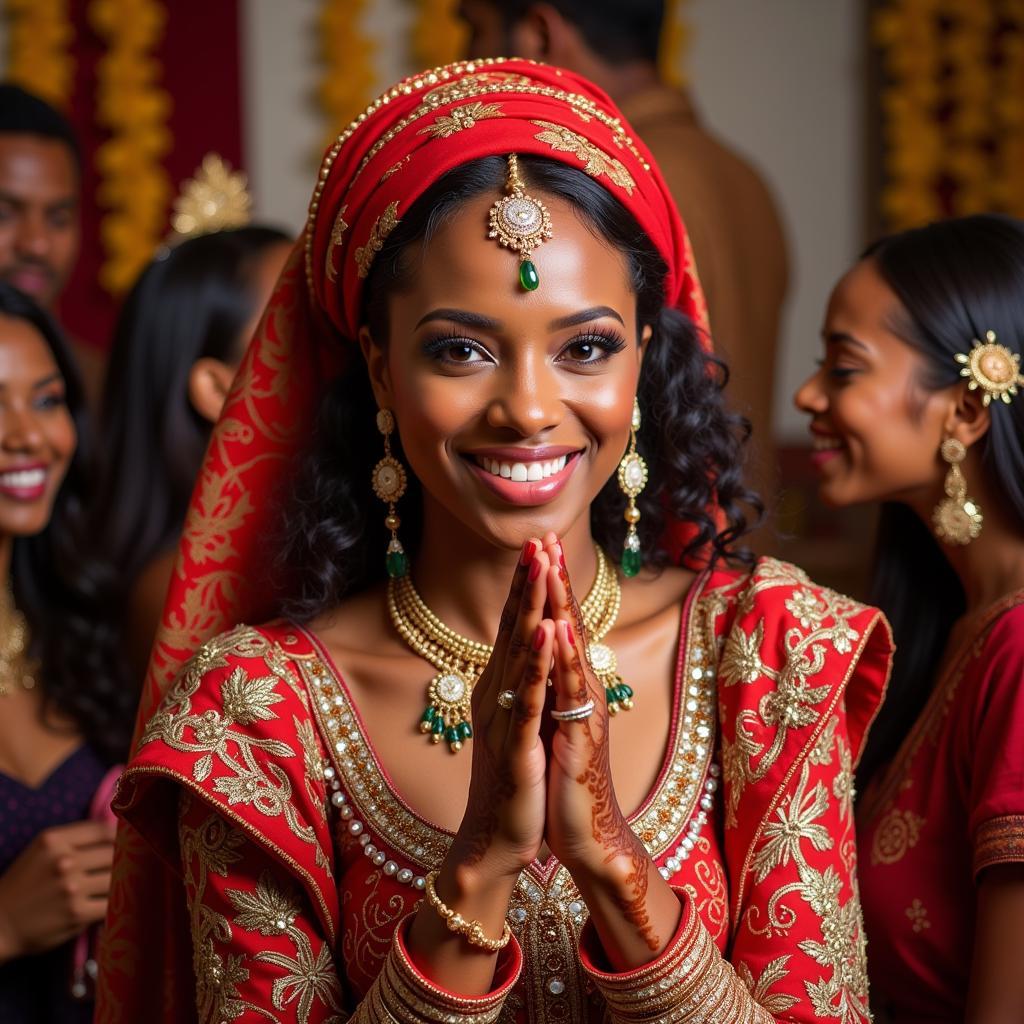African Henna Meanings: A Journey into Symbolism and Tradition
The art of henna, known as “mehndi” in the Indian subcontinent, holds a special place in many cultures around the world. In Africa, where it has been practiced for centuries, African henna meanings go beyond mere decoration. They speak of ancient traditions, spiritual beliefs, and social customs deeply woven into the fabric of daily life.
Unveiling the Significance: More Than Just Skin Deep
Across the diverse landscapes of Africa, henna is more than just a beautiful adornment. It’s a language, a way of life, and a powerful symbol of cultural identity. Each region, each community, has developed its own unique vocabulary of henna patterns, imbued with layers of meaning passed down through generations.
From the Berber tribes of North Africa to the Wolof people of Senegal, henna patterns reflect a tapestry of beliefs and social structures. These intricate designs, often applied during rites of passage, festivals, or healing ceremonies, offer a glimpse into the rich tapestry of African cultural heritage.
Decoding the Symbols: Common Motifs and Their Significance
Understanding the symbolism behind African henna designs can be a journey of discovery. While interpretations may vary between communities, some motifs hold universal significance:
- Geometric Patterns: Often representing protection, order, and the connection to the spiritual realm.
- Floral Designs: Associated with femininity, fertility, growth, and abundance.
- Animal Motifs: May symbolize strength, courage, or the characteristics of the animal depicted. For instance, a snake might represent transformation and wisdom.
- Spirals and Swirls: Often signify journeys, life cycles, and the interconnectedness of all things.
African Henna Traditions: A Celebration of Life’s Milestones
Henna ceremonies, often accompanied by music, dancing, and storytelling, mark significant milestones in an individual’s life and within the community:
- Birth Celebrations: Welcoming a new life into the world, henna is used to bless the mother and child with good health and fortune.
- Coming-of-Age Rituals: Marking the transition to adulthood, these ceremonies often incorporate henna designs that signify purity, strength, and readiness for marriage.
- Weddings: An integral part of bridal adornment, African mehndi design during weddings is believed to bring love, luck, and blessings to the couple.
 An African bride adorned with elaborate henna designs during her wedding ceremony
An African bride adorned with elaborate henna designs during her wedding ceremony
- Healing Rituals: In some cultures, henna is believed to possess healing properties and is applied to alleviate ailments or ward off negative energies.
“Henna is not merely a decorative art form,” shares Abeni Agbenyega, a renowned Ghanaian artist and cultural historian. “It’s a living tradition that embodies the spirit of our ancestors and connects us to the essence of who we are.”
Beyond Borders: The Enduring Legacy of African Henna
Today, the allure of African henna has transcended geographical boundaries. From fashion runways to contemporary art scenes, these intricate designs are inspiring artists, designers, and beauty enthusiasts worldwide. This global appreciation not only celebrates the aesthetic beauty of African girl hennur but also helps preserve and honor the rich cultural heritage it represents.
Conclusion
Exploring the African henna meanings opens a window into a world where art intertwines with life, tradition, and belief. These intricate patterns, far more than mere adornment, offer a captivating glimpse into the heart of African culture, its enduring traditions, and the profound connection between art and the human experience.
FAQ
1. Is henna only for women in African cultures?
While henna is predominantly used by women in many African cultures, men may also use it, particularly for special occasions or healing rituals. The specific customs and applications vary widely between communities.
2. How long does African henna last on the skin?
The stain typically lasts for one to three weeks, depending on the quality of henna paste used, the intricacy of the design, and how well the skin is cared for after application.
3. Are there any specific colors of henna used in Africa?
The most common color is a reddish-brown, derived from the henna plant. However, other natural ingredients like indigo or charcoal may be added to achieve variations in shade, such as black or dark brown.
4. What is the significance of henna in African healing traditions?
While specific beliefs vary, henna is often associated with cooling, purifying, and protective qualities. It may be applied to soothe burns, reduce inflammation, or ward off negative energies.
5. Where can I learn more about African henna designs and their meanings?
Museums, cultural centers, and online resources dedicated to African art and traditions offer valuable insights. Connecting with artists, henna practitioners, or community members can provide firsthand knowledge and deeper understanding.
Need help with your African aesthetic?
Contact us:
Phone Number: +255768904061
Email: kaka.mag@gmail.com
Address: Mbarali DC Mawindi, Kangaga, Tanzania
We have a 24/7 customer support team.